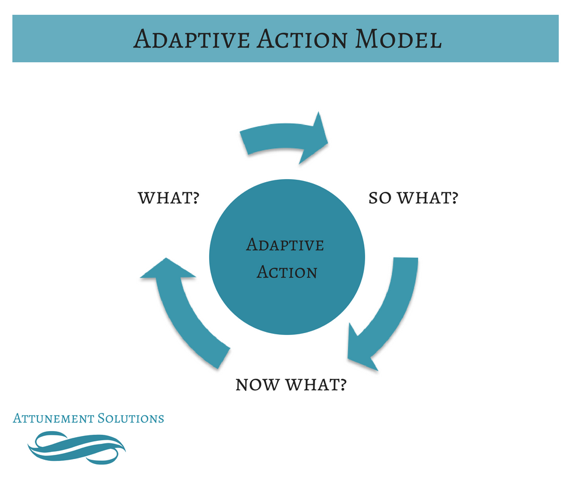Fight-flight-freeze responses can be overcome using adaptive action cycles. Mindful practitioners have the presence required to observe and support a client’s natural ability to overcome unwanted responses and to develop new, healthy ways to cope. Whether we are working with a client with challenges associated with post-traumatic stress, a child with autism reacting to unwelcomed touch or an organizational system that resists change, the adaptive action cycle supports a breakthrough.

We now understand that physical and social stress is contagious and activates the fight-flight-freeze response through a system we might refer to as our collective unconscious. Neurobiologically, we can understand this as a cortisol synchronization process that emerges during disagreements, physical fights, workplace dramas, government shut-downs, and riots. Any form of individual or collective unrest that emerges from personal or collective activation of the fight-flight-freeze response can be overcome using the adaptive action cycle.
This means that the adaptive action cycle can work as a bottom-up intervention that starts with a single person and as a top-down intervention that begins with the group, team, or organizational leader. Obviously, it takes a long time and a great deal of personal resilience for organizational change to occur in response to a bottom-up intervention that starts with a single person.
For this reason, top-down interventions are recommended as a first course of action when systemwide rather than individual change is the goal. This is important to understand when promoting healthy family, community, educational, academic, organizational, health care and government system dynamics.
